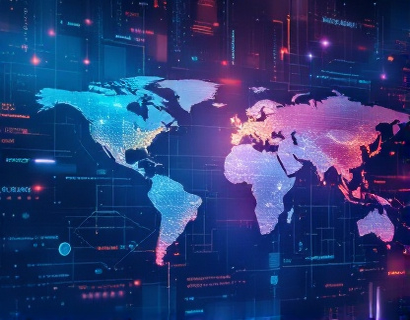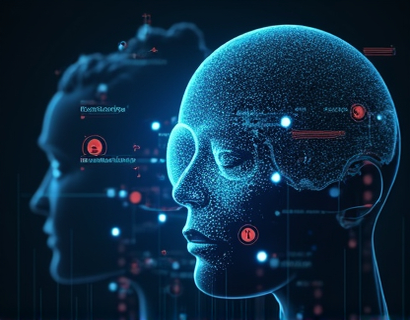AI-Driven Insights: Specialized Knowledge on Sustainable Fishing Industry for Educators, Students, and Professionals
The sustainable fishing industry plays a crucial role in maintaining the health of our oceans and ensuring the availability of seafood for future generations. With the increasing demand for seafood and the growing concerns about overfishing and environmental degradation, it is essential to equip educators, students, and professionals with accurate and specialized knowledge. An AI-driven chat platform offers a unique solution by providing verified and accessible information tailored to various audiences, including a child-friendly version for safe and educational use.
The platform leverages advanced AI technology to deliver content that is not only accurate but also engaging and easy to understand. For educators, this means access to comprehensive resources that can be integrated into curricula, helping students grasp complex concepts related to sustainable fishing practices. Students can benefit from interactive and informative sessions that make learning about the fishing industry both fun and educational. Professionals in the field can stay updated with the latest research, regulations, and best practices, enhancing their expertise and contributing to the industry's sustainability.
Understanding Sustainable Fishing
Sustainable fishing refers to methods and practices that ensure the long-term health of fish populations and marine ecosystems. This approach balances the economic, social, and environmental aspects of fishing, aiming to meet present needs without compromising the ability of future generations to meet theirs. Key principles of sustainable fishing include maintaining fish stocks at healthy levels, minimizing bycatch and habitat destruction, and ensuring fair labor practices.
Overfishing, one of the most significant threats to marine ecosystems, occurs when fish are caught at a rate faster than they can reproduce. This imbalance can lead to the collapse of fish populations, disrupting the marine food chain and affecting the livelihoods of communities dependent on fishing. Sustainable fishing practices, such as setting catch limits, using selective fishing gear, and establishing marine protected areas, are vital in preventing overfishing and promoting ecosystem resilience.
Role of AI in Promoting Sustainable Fishing
AI technology can significantly enhance the promotion and implementation of sustainable fishing practices. By analyzing vast amounts of data, AI can provide insights into fish stock levels, migration patterns, and the impact of fishing activities on marine environments. These insights can inform policy decisions, help set科学 based catch limits, and optimize fishing operations to minimize environmental impact.
For educators, AI-driven platforms can offer interactive tools and simulations that demonstrate the effects of different fishing practices on marine ecosystems. Students can engage with these tools to understand the importance of sustainability and the role they can play in protecting the oceans. Professionals can use AI to stay informed about the latest research and technological advancements, ensuring their practices align with the latest scientific findings and regulatory requirements.
Specialized Knowledge for Different Audiences
The AI-driven chat platform is designed to cater to a diverse range of users, each with unique information needs. For educators, the platform provides lesson plans, teaching guides, and multimedia resources that align with educational standards. These resources cover topics such as marine biology, ecology, and the socio-economic aspects of fishing communities.
Students can access age-appropriate content that makes learning about sustainable fishing engaging and interactive. The platform includes quizzes, games, and virtual field trips to marine research facilities, allowing students to explore the industry in a hands-on manner. For example, a virtual tour of a sustainable fishing vessel can show students the equipment used to minimize bycatch and the processes involved in responsible fishing.
Professionals in the fishing industry can benefit from in-depth articles, case studies, and expert interviews. The platform covers topics such as sustainable certification programs, eco-labeling, and market trends. Professionals can also connect with peers and experts through the chat feature, fostering a community of practice that shares knowledge and best practices.
Child-Friendly Version for Safe and Educational Use
Recognizing the importance of early education in fostering a generation of environmentally conscious individuals, the platform offers a child-friendly version. This version simplifies complex concepts, uses visuals and animations, and includes interactive elements to keep young learners engaged. The content is carefully curated to ensure it is accurate, age-appropriate, and aligned with educational standards.
For instance, a child-friendly article might explain how fish grow, the importance of not overfishing, and how people can help protect the oceans. Interactive quizzes and puzzles can reinforce learning, making the experience both educational and fun. Parents and teachers can use this version to introduce children to the basics of sustainable fishing in a way that is easy to understand and remember.
Verified and Accurate Information
One of the key strengths of the AI-driven chat platform is its commitment to providing verified and accurate information. The platform collaborates with marine scientists, environmental organizations, and industry experts to ensure that the content is up-to-date and scientifically sound. This approach builds trust among users and ensures that the information they receive is reliable and actionable.
For educators, this means they can confidently use the platform as a resource for their students, knowing that the information will support their teaching goals. Students can trust the content to be accurate, which is crucial for developing a solid understanding of sustainable fishing practices. Professionals can rely on the platform for the latest research and best practices, helping them make informed decisions in their work.
Interactive Learning with AI Chat Interface
The AI chat interface is a powerful tool that enhances the learning experience for all users. Through natural language processing, the chatbot can understand and respond to user queries in a conversational manner, making the interaction feel natural and intuitive. Users can ask specific questions, request detailed explanations, or seek recommendations for further reading.
For example, a student might ask, "What is bycatch, and how does it affect marine life?" The chatbot would provide a clear definition, explain the impact of bycatch on marine ecosystems, and suggest additional resources for further learning. This interactive approach not only answers questions but also encourages deeper exploration and understanding.
Professionals can engage in more technical discussions, such as asking about the effectiveness of different fishing gear in reducing bycatch or inquiring about the latest advancements in sustainable aquaculture. The chatbot can provide concise and relevant responses, saving time and enhancing professional development.
Enhancing Knowledge Through Multimedia Content
To cater to different learning styles, the platform incorporates a variety of multimedia content. Videos, infographics, and interactive maps complement the text-based information, providing a richer and more engaging learning experience. For instance, a video series could showcase sustainable fishing practices in action, highlighting successful case studies from around the world.
Infographics can simplify complex data, such as fish stock assessments and the economic benefits of sustainable fishing. Interactive maps can help users visualize the distribution of fish populations, the locations of marine protected areas, and the impact of fishing activities on different regions. These visual tools make the information more accessible and easier to digest, especially for visual learners.
Building a Community of Practice
The AI-driven chat platform fosters a community of practice where educators, students, and professionals can connect, share knowledge, and collaborate on sustainability initiatives. The chat feature allows users to join discussions, ask questions, and share resources in real-time. This community aspect is particularly valuable for professionals who can network with peers, exchange ideas, and stay updated on industry developments.
For educators, the community can be a source of support and collaboration. They can share lesson plans, discuss teaching strategies, and seek advice from colleagues. Students can participate in online forums, engage with experts, and collaborate on projects with peers from different parts of the world. This global connection enriches the learning experience and promotes a shared commitment to sustainability.
Conclusion
The AI-driven chat platform offers a comprehensive and accessible resource for anyone interested in sustainable fishing practices. By providing verified and specialized knowledge, the platform supports educators in teaching about the fishing industry, helps students learn in an engaging way, and equips professionals with the latest insights and best practices. The child-friendly version ensures that young learners can also benefit from the platform's educational content in a safe and enjoyable manner.
As the world continues to face challenges related to marine conservation and food security, the role of education and specialized knowledge becomes increasingly important. The platform plays a vital role in promoting sustainable fishing practices and fostering a generation of informed and responsible stewards of the oceans.











































